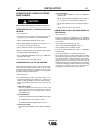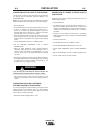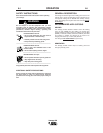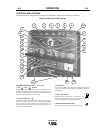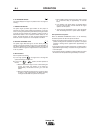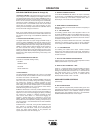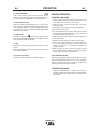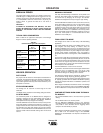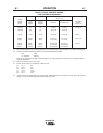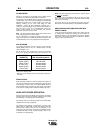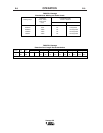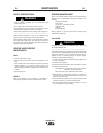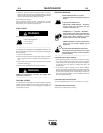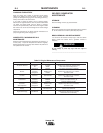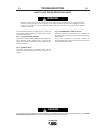
Table B.3 TYPICAL CURRENT RANGES
(1)
FOR TUNGSTEN ELECTRODES
(2)
DCEN (-) DCEP (+) Approximate Argon Gas Flow Rate
l/min (c.f.m.)
Tungsten
Electrode 1%, 2% 1%, 2% TIG TORCH
Diameter Thoriated Thoriated Aluminium Stainless Steel Nozzle
mm (in) Tungsten Tungsten Size (4), (5)
.25 (0.010) 2-15 (3) 2-4 (3-8) 2-4 (3-8) #4, #5, #6
.50 (0.020) 5-20 (3) 3-5 (5-10) 3-5 (5-10)
1.0 (0.040) 15-80 (3) 3-5 (5-10) 3-5 (5-10)
1.6 (1/16) 70-150 10-20 3-5 (5-10) 4-6 (9-13) #5, #6
2.4 (3/32) 150-250 15-30 6-8 (13-17) 5-7 (11-15) #6, #7, #8
3.2 (1/8) 250-400 25-40 7-11 (15-23) 5-7 (11-15)
4.0 (5/32) 400-500 40-55 10-12 (21-25) 6-8 (13-17) #8, #10
4.8 (3/16) 500-750 55-80 11-13 (23-27) 8-10 (18-22)
6.4 (1/4) 750-1000 80-125 13-15 (28-32) 11-13 (23-27)
(1) When used with argon gas. The current ranges shown must be reduced when using argon/helium or pure helium shielding gases.
(2) Tungsten electrodes are classified as follows by the American Welding Society (AWS):
Pure EWP
1% Thoriated EWTh-1
2% Thoriated EWTh-2
Though not yet recognized by the AWS, Ceriated Tungsten is now widely accepted as a substitute for 2% Thoriated Tungsten in
AC and DC applications.
(3) DCEP is not commonly used in these sizes.
(4) TIG torch nozzle “sizes” are in multiples of 1/16ths of an inch:
# 4 = 1/4 in. 6 mm
# 5 = 5/16 in. 8 mm
# 6 = 3/8 in. 10 mm
# 7 = 7/16 in. 11 mm
# 8 = 1/2 in. 12.5 mm
#10 = 5/8 in. 16 mm
(5) TIG torch nozzles are typically made from alumina ceramic. Special applications may require lava nozzles, which are less prone to
breakage, but cannot withstand high temperatures and high duty cycles.
B-7 OPERATION B-7
Vantage 575



